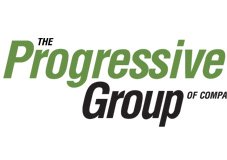Hog producers locking in profitable prices
Tuesday Sep 13 2011by ED WHITE, Winnipeg Bureau, Western Producer
Profitable prices for the next year are hanging in front of hog producers’ eyes and many are locking those prices in.
That’s a change from many times of increasing prices, said Manitoba Pork Marketing Co-op’s risk management specialist. But it shows producers are now being prudent and wary after surviving a brutal downturn.
“We’ve seen a major shift in producer risk management behaviour,” said Tyler Fulton.
“We’re seeing wider-spread uptake of programs by more producers — guys who have never done it — but on average a smaller percentage of their herd, which is a much more sustainable approach.”
Chicago lean hog futures prices through the fall and into next summer show that the market believes hogs will be profitable through the period.
As of Sept. 3, prices per hundredweight were $77.03 for October, $74.14 for December and $83.75 for June 2011.
That’s a relief to farmers, who often face a price downturn in October, November and December as American pigs fatten more quickly once the summer months have passed, and the Christmas holiday period slashes slaughter levels.
Current price levels suggest hog prices will be profitable through that period, as long as feed prices don’t soar.
Fulton said many farmers who never before hedged hog prices are doing so to reduce their risks. Previously, many did not, and some of those who did would either lock in 100 percent of their prices or none. It was price speculation rather than risk management.
Fulton said the combination of better hog prices and rising feedgrain prices is creating a challenging outlook for next summer, because the market is split on whether the American hog herd will expand.
Some believe that higher lean hog futures prices will cause many producers to expand their herds, which would be a bearish influence.
But others, including Fulton, think rising grain prices will stop producers from getting aggressive about quick herd expansions so soon after the end of the hog crisis.
“I think they’re acutely aware of the feed costs,” said Fulton.
Even if producers want to expand, their lenders might not make it easy.
“It’s much more difficult to get credit for those expansions,” said Fulton.
Back to News

Hog producers are looking at ways of meeting new animal care requirements as they come into effect (read article)


